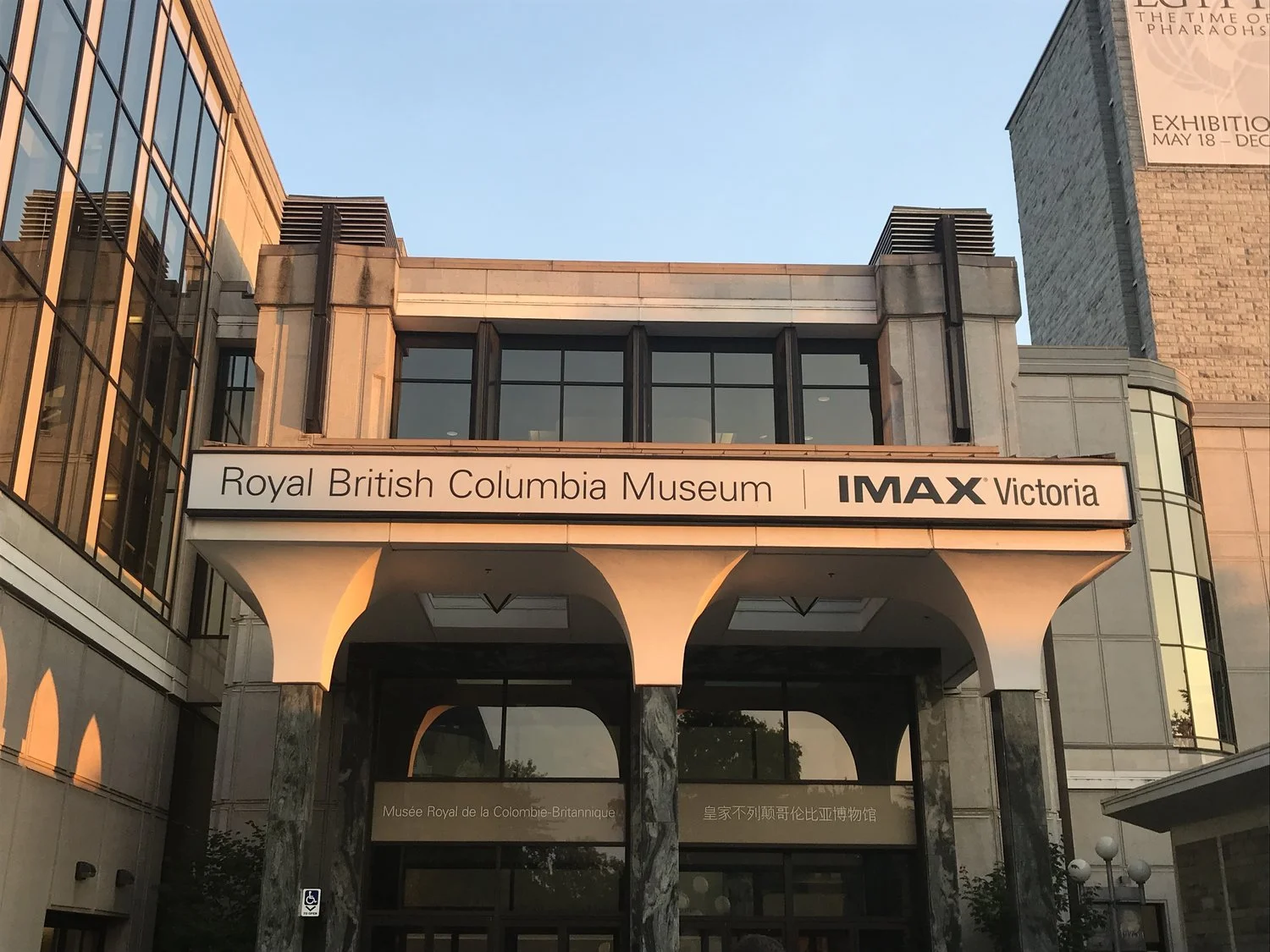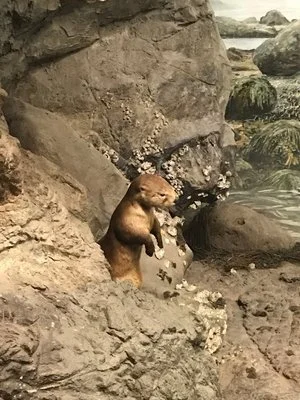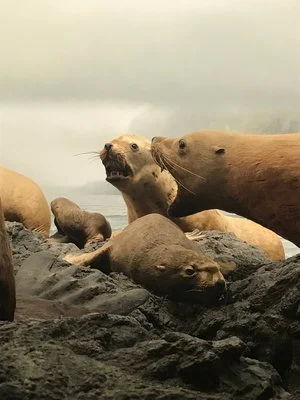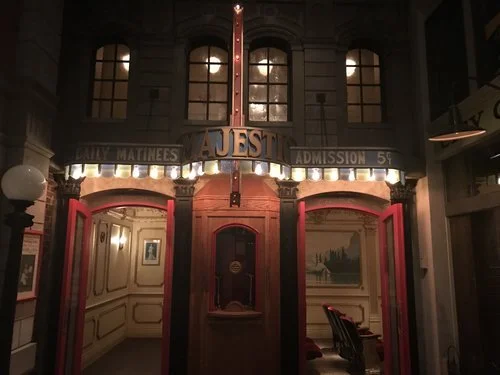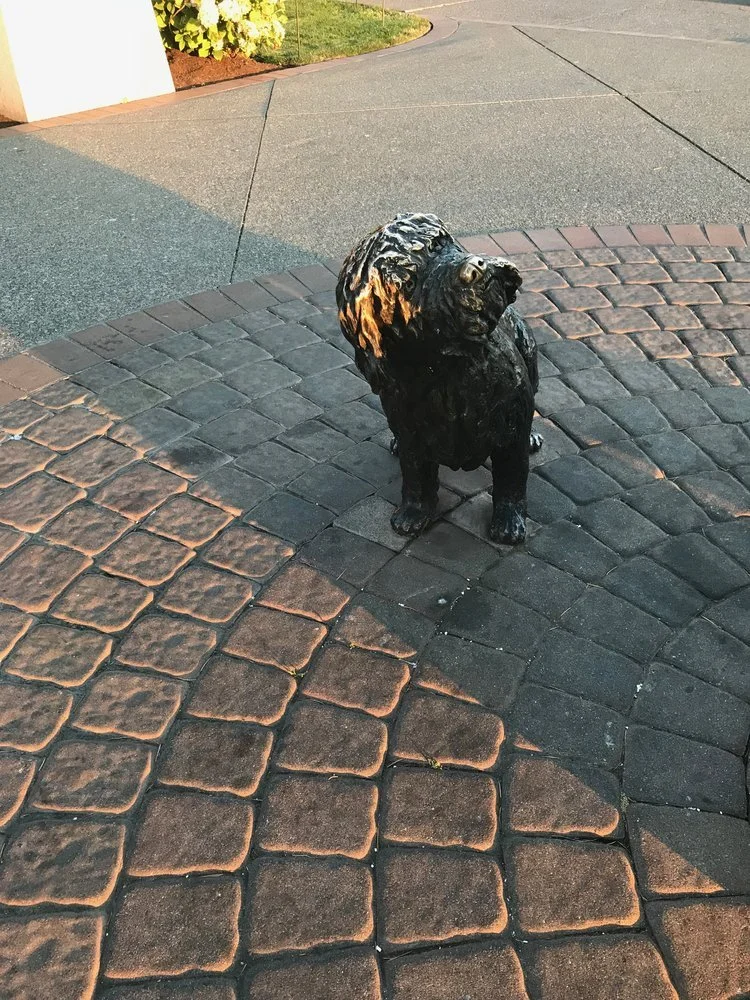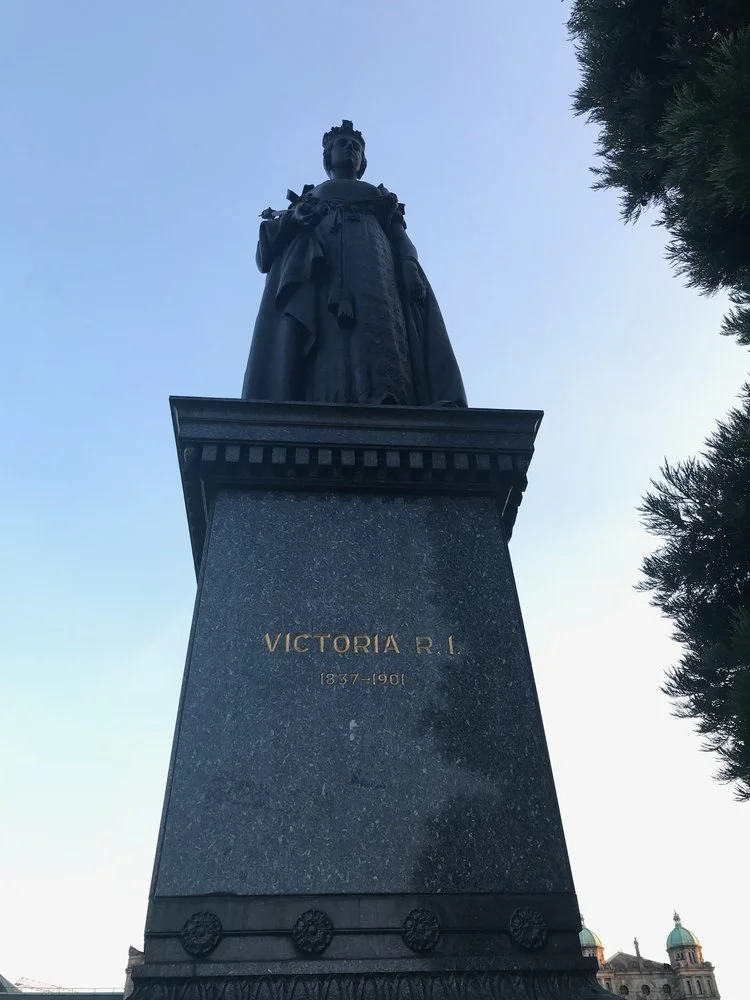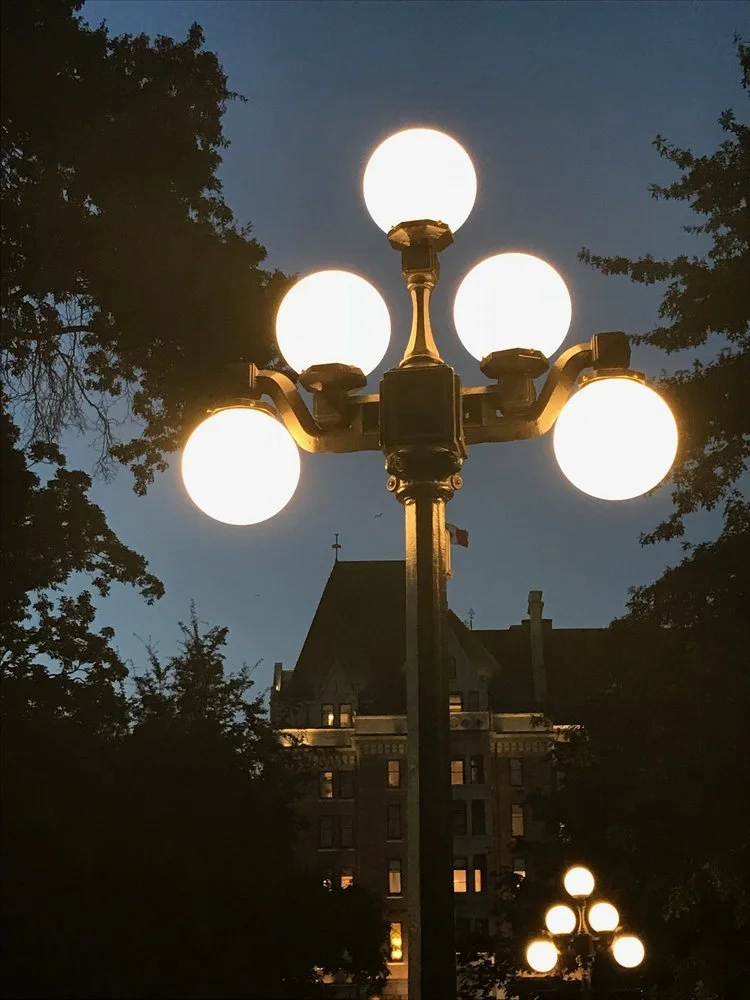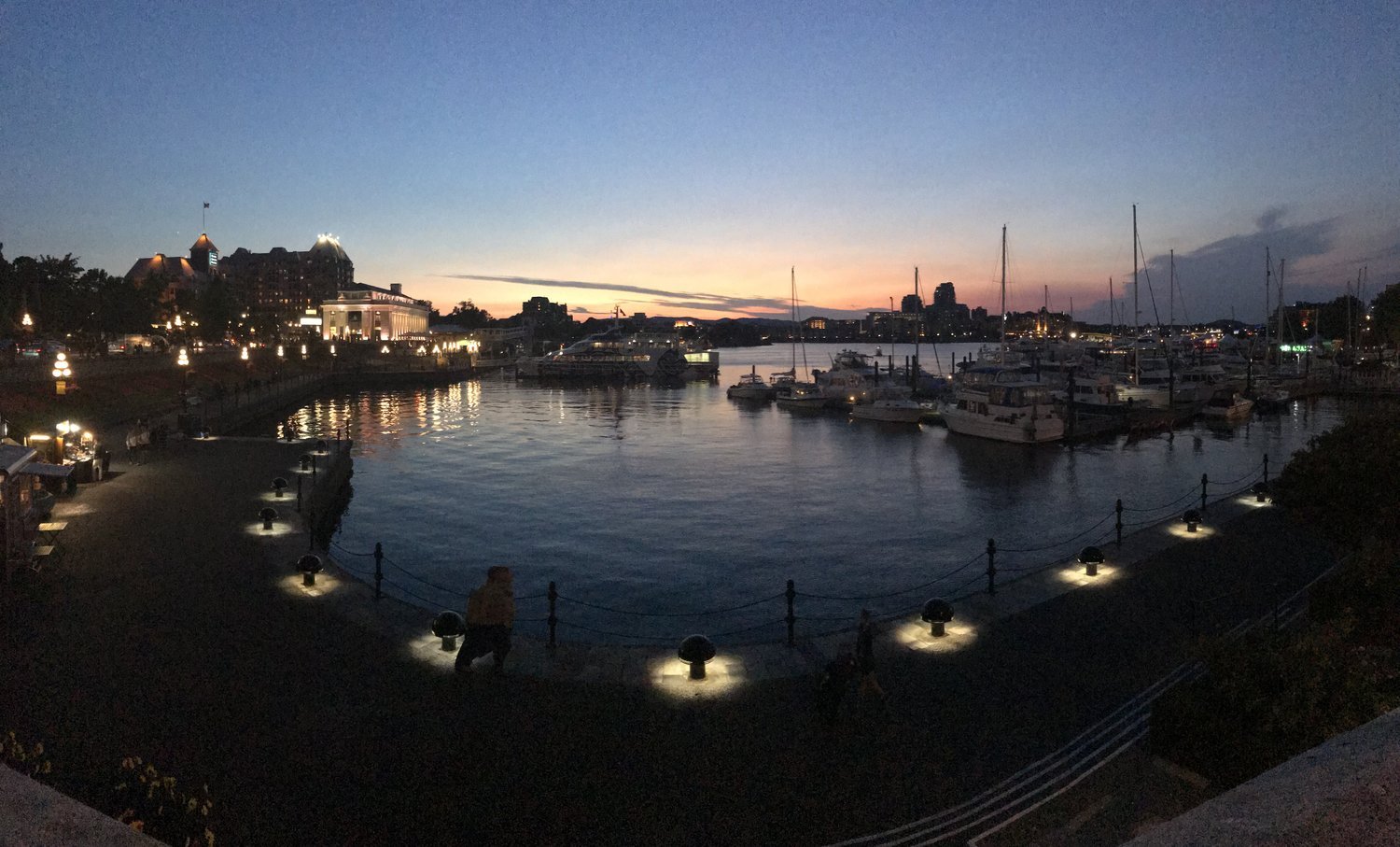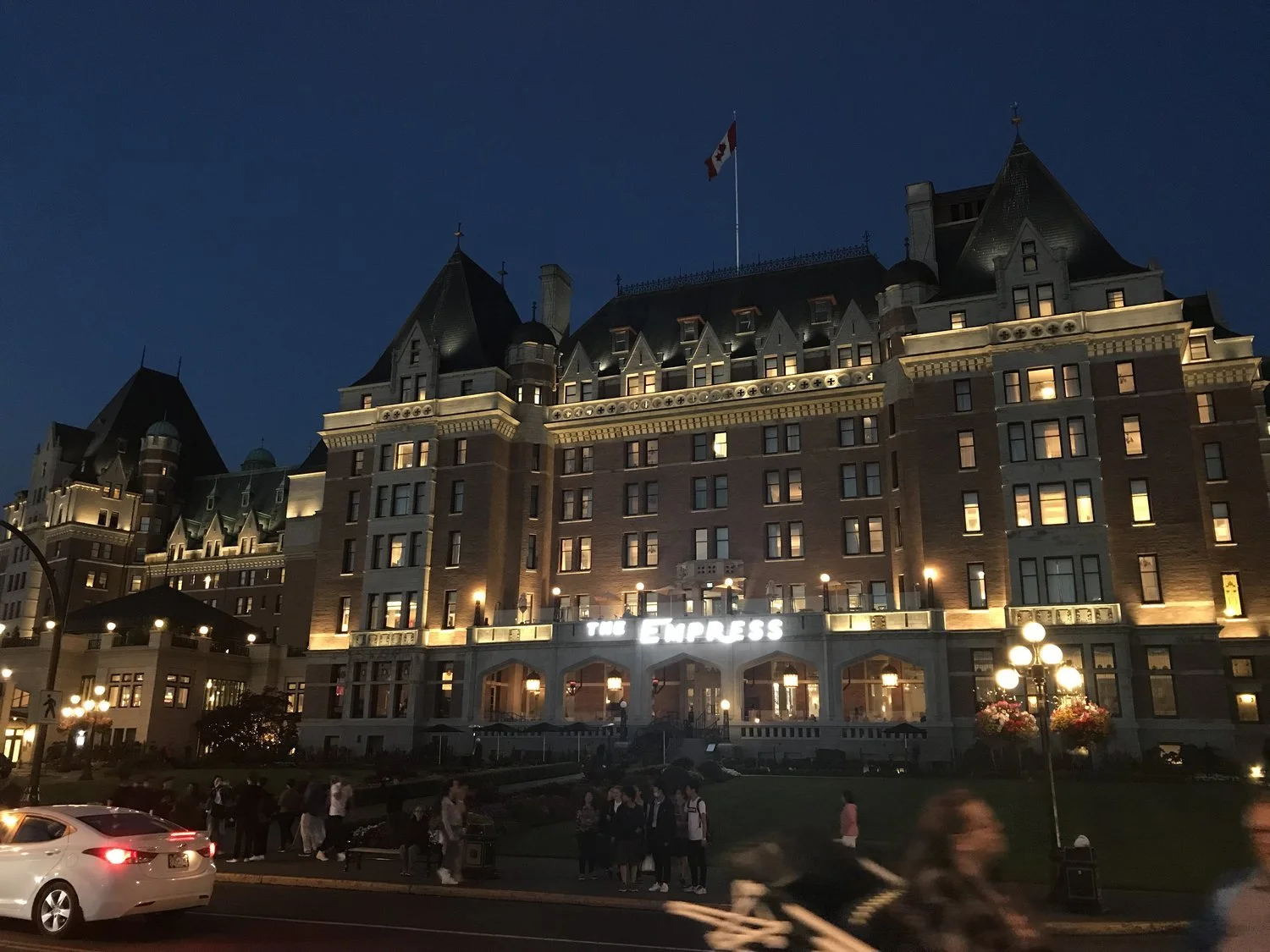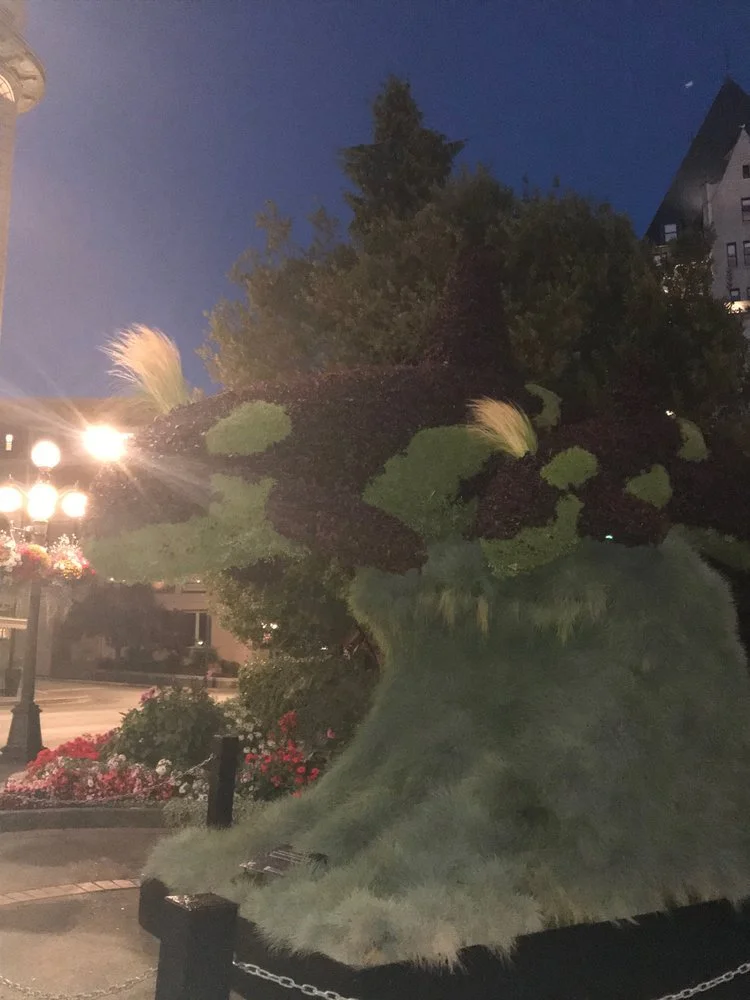Exploring Victoria, B.C.
Updated January 1, 2023
Time needed in this town/city: 2-3 nights
After a rainy and cold week on an Alaska cruise, Victoria was a nice respite for a few hours, prior to heading back to Seattle for the end of my trip.
While this was just a day trip to conclude the cruise, the below information is a complete guide of the best places to stay, the top rated places to dine and drink, and all there is to see and do. We’ve also included transportation tips, as well as a summary of the history of this beautiful city!
Pulling into port and seeing the whales!
While we were heading towards our final destination, we had a few “friends” that wanted to say hi:
Jump To:
Where to Stay
I’m a huge fan of Fairmont properties both because of their opulence and their history. The Fairmont Empress dates back to 1908 and has 431 rooms, a fantastic restaurant and of course, their well-known tea service. It’s also said to be haunted (click here to read that story).
Other Places To Stay
Country Retreat (entire home)
The Latch Inn (Perfect 10/10 rating)
Where to Dine & Drink
Artemis Whiskey Bar (Speakeasy)
Riddled with superstition, divination and charms, the port of Artemis located in outer space is wicked place for whiskey and cocktails.
Ayo Eat
Colorful take-out window whipping up spicy Indonesian & Thai dishes like curries & nasi goreng.
BC Legislative Dining Room
Cozy, old-fashioned cafe the Legislative Assembly building offering a breakfast & lunch menu.
Blue Fox Cafe
Vibrant, colourful cafe known for all-day breakfast & imaginative takes on Canadian comfort food.
bodega
Intimate fixture featuring Spanish tapas, wine & cocktails in a warm atmosphere, plus patio seating.
Brasserie L'Ecole
Celebrated brasserie for French fare & wine served in bustling, unpretentious quarters.
Cafe Brio
Unpretentious choice for salumi, wine & Italian-leaning meals, made from local ingredients.
Chorizo & Co. Restaurant & Bar
Relaxed, dimly-lit industrial eatery offering Spanish tapas dishes plus wine, beer & sangria.
Citrus & Cane (Bar & Lounge)
Fashionable bar presenting cocktails, beers & wine amid retro-style surroundings.
Il Terrazzo
Intimate, candlelit Italian nook with brick fireplaces, patio seating & a notable wine list.
Jam Cafe
All-day breakfast, including eggs Benedict & pancakes, plus updated comfort food amid rustic decor.
L' Apéro Wine and Cheese Bistro
The name says it all!
MAiiZ Nixtamal Eatery & Tortilleria
Per their website, “MAiiZ Tortillas are impeccable quality tortillas made with Volcanic Stone-Ground Certified Organic Corn grown in Armstrong BC. Chef Israel Alvarez Molina has adapted the traditional Mesoamerican Nixtamal process to suit BC Corn, resulting in a tortilla that is both unique and a taste of home.”
Marilena Cafe & Raw Bar
Per their site, “Marilena features local and global seafood paired with high-quality sustainable ingredients that adhere to the highest standards. Guests can choose from a selection of nigiri, sashimi and sushi rolls at our stunning Japanese raw bar led by Chef Clark Park.”
Naami’s Mediterranean (top-rated)
Serves Mediterranean cuisine in the Victoria Public Market.
nourish kitchen & cafe
This restaurant & cafe serves simple farm-fresh mains & snacks in an airy, bright Victorian house.
Origin Gluten-Free Bakery
Per their website, “Our vision is to provide gluten-free food that tastes better and has healthier ingredients than what is currently available. Instead of searching the frozen section of the supermarket for rice and starch-based breads, we've created a space for the celiac community where they can find fresh foods with fresh ingredients. We use a variety of over 20 gluten-free flour substitutes to replace wheat flour, using different combinations in each of our products. Our diverse range of breads and baked goods do not taste similar because we don't use a master blend of ingredients.”
Part and Parcel
Hip restaurant crafting small plates, salads, sandwiches & mains with locally sourced ingredients.
Q at the empress
When I did some research on what I wanted to experience in Victoria, I decided that I’d first take dinner on the verandah of the Empress Hotel, overlooking the bay. I dined on homemade hummus with fresh local veggies and a greens salad with chicken, while sipping on honey lavender lemonade. All of the ingredients were very fresh from their own gardens.
Note: Service is really slow so plan to be there a couple of hours.
Sally Bun
A twist on Chinese buns.
SHASHWAT INDIAN CUISINE
Serving traditional Indian Cuisine.
Sour Pickle Cafe
Omelettes, burgers & other casual fare served for breakfast & lunch in a laid-back dining space.
Uchida Eatery
Easygoing Japanese standby for lunch-only menu of sushi, noodles, teriyaki & other everyday fare.
Victoria Ice Cream & Fudge Factory
There are 66 different flavors of ice cream, in addition to their fudge and other confectionaries.
Food & Drink Tours
Things to See & Do
Historical Exploration
Craigdarroch Castle
Constructed in the late 19th century as a family residence for the wealthy coal baron, Robert Dunsmuir, and his wife, Joan. the entire family was unable to see the castle to completion as Robert died in April 1889, 17 months before construction on the castle was completed. His sons, Alexander and James, took over the role of finishing the home after his death. James also commissioned the construction of Victoria's second "castle", “Hatley Castle”, located in Colwood, British Columbia.
Upon the death of Robert widow, Joan, the Craigdarroch estate was sold to land speculator, Griffith Hughes, for $38,000 who subdivided the estate into building lots. To stimulate sales during a slow real estate market, Griffiths announced that the home would be the subject of a raffle to be won by one of the purchasers of the residential parcels carved from the estate. The winner, Solomon Cameron, who mortgaged the home to finance other speculative ventures which failed, leaving him broke. In 1919, ownership of the home passed to one of Cameron's creditors, the Bank of Montreal.
The building later served as a military hospital, college, offices, and a conservatory, before it was re-purposed into a historical museum in 1979. The museum is currently owned by the Craigdarroch Castle Historical Museum Society, which is a private non-profit society and is open to the public.
Emily Carr House
Emily Carr grew up in this upper class home in Victoria, British Columbia, which was designed in 1863 by famed local architects, Wright and Saunders. Throughout her life, Carr would draw strength and inspiration from her childhood home and the area surrounding.
Emily was a painter whose works were heavily inspired by the indigenous people and landscapes of the Pacific Northwest Coast. She was an adventurer and a feminist, often traveling alone and in rugged conditions in order to reach remote villages. She recorded these adventures in great detail and published several books of her accounts. She was also known for her eccentricities, notably owning a pet monkey who she dressed up and took for walks.
After 1913, she built a house nearby her childhood home where she spent many happy years running an art school.
Today, the Emily Carr House is a museum celebrating the life of this fascinating Canadian artist. Keep an eye out for the Carr House cats, who are known to have the run of the entire museum.
Fisgard Lighthouse
Built in 1860, Fisgard Lighthouse was the first lighthouse constructed on the west coast of what was to become Canada. It was originally built on a small island a few dozen meters off the coast. Early keepers had to row food and supplies from land, though a breakwater and walkway were put in for ease of access.
Now, the harbor is home to Canada’s main Pacific Ocean naval base, and Fisgard Lighthouse guides ships into their home port from duties around the world. It shares a National Historic Site with Fort Rodd Hill, a former military site, with large banks of artillery and canons, built in the 1890s and shut down as a base in 1956.
NOTE: There is a fee to tour the lighthouse and its grounds.
Hatley Castle
In 1906, B.C.'s Lieutenant Governor, James Dunsmuir, purchased the property the castle now sits on. He and his wife, Laura, commissioned the renowned Canadian architect, Samuel Maclure, to build a 40-room mansion in the Scottish baronial style. The Dunsmuirs created many beautiful formal gardens using the services of renowned American garden designers, Franklin Brett and George D. Hall of Boston, Massachusetts. The Dunsmuirs named their estate "Hatley Park", in the tradition of British and European private estates. The castle became a landmark and was occupied by descendants of the Dunsmuir family until after the Great Depression, in 1937.
Following the death of Laura Dunsmuir in 1937, the estate was sold to the Government of Canada in 1939. The government sold off some of the land and during five days in June 1939, "Maynard & Sons" conducted a public auction of the mansion's contents totaling 927 lots.
At the outbreak of WWII, contingency plans were made for George VI, King of Canada, his wife, Queen Elizabeth, and their two daughters, Princesses Elizabeth and Margaret, to reside in Canada in the event of an invasion of Britain. The family's primary options were stately homes in England however, Victoria, BC, was the backup site, in case German troops reached the Midlands. Thus, the federal Crown-in-Council purchased Hatley Castle in 1940 for use as the King's royal residence.
From 1948, Hatley Castle was known as the Royal Roads Military College and was used as such until 1995. It was then leased to the Province of British Columbia. That same year, the castle and grounds were designated a National Historic Site of Canada.
In September 1995, Royal Roads University was opened as a public, degree-granting university. It leases the campus from the Department of National Defence for $1 per year. The university manages all stewardship responsibilities related to the site, including site management, operations, heritage preservation and restoration, and educating the public about the site's history and natural resources.
Touring its gardens is at a small fee in order to maintain them.
FUN FACT: Many movies and TV shows have been filmed here, including X-Men (Xavier's School for Gifted Youngsters), Masterminds, MacGyver (episode 2, season 5), The Changeling, and more.
Parliament
Opened in 1898, this Renaissance Parliament building set the example for many other buildings in an around Victoria. Still in use today, its grounds are used as a park of sorts for people to sit down, listen to live music, and stare at the over 30,000 lights that line the building.
NOTE: You can take a guided tour of the building.
St. Ann’s Academy
The main academy building, which also served as the Provincial House, convent and novitiate, was built by the Roman Catholic Congregation of Women the Sisters of Saint Anne of Lachine, Quebec. The chapel, designed by Father Joseph Michaud, was built in 1858 as St. Andrew's Cathedral was moved in 1886 to be St. Ann's Chapel and is the oldest part of the Academy. In 1887, a convent was added to the west side of the Academy and behind the Academy (1910).
The Sisters of St. Ann closed the Academy and in 1973, sold the property to the provincial government of British Columbia, which used it as office space for the public service for a few years, but it was in need of major repairs and had to be closed. Years-long civic debate of diverse proposals for the future of the building and site ensued.
Placed under the stewardship of the Provincial Capital Commission, the interior of the building was gutted and rebuilt, basement to attic, providing seismic upgrade and rehabilitation into modern office space. Once completed, the majority of the building was leased to the BC Ministry of Advanced Education, a use consistent with the Sisters' aims. The exterior facade of its heritage building was retained and repaired. The chapel, parlors, and infirmary were retained as an interpretive center and restored to their 1920s decor. The auditorium at the other end of the building was also seismically upgraded and restored, and is used for public lectures and concerts. The building was re-opened in 1997.
The chapel was deconsecrated when the Sisters sold the property. Since the restoration of the chapel and the adjacent Novitiate Garden, these have been used as a venue for weddings and other functions.
An annex behind the main building, which had been occupied by the Victoria Conservatory of Music, was demolished on September 11, 2001 following the Conservatory's move to the former Metropolitan United Church buildings. The site was cleared and became green space, merging the Academy grounds with the adjacent Beacon Hill Park.
NOTE: You are able to tour the property.
The Arts & Sciences
Gonzales Observatory
In 1915, Napier Denison built the Gonzales Heights Observatory to use traditional timekeeping technologies without realizing where they would lead him.
In 1917, Denison began radio time transmission, from the Observatory, with a reported coverage of 300 miles. He was soon monitoring radio time transmissions from California and by 1923, he had established a powerful transmitter at Estevan Point, north of Tofino, near Nootka Sound, which had an effective radius of 3000 miles. During this transformation, Denison, at some point, ceased using his telescope and therefore, trying to be an independent source of time. He went on to live with his wife for another 15 years, in a modest apartment, under his old telescope in the Observatory building.
His Observatory became an artifact.
Despite being one of the smallest parks in Greater Victoria (it spans just 4.5 acres), Gonzales Hill Regional Park has some of the most impressive views. From the lookout, you can see the Strait of Juan de Fuca, the Olympic Mountains, Sooke Hills, and the Salish Sea.
THE ROYAL B.C. MUSEUM
Founded in 1886, The Royal BC Museum includes three permanent galleries: Natural History, Becoming BC, and the First Peoples Gallery. The museum's collections comprise approximately 7 million objects, including natural history specimens, artifacts, and archival records. The natural history collections have 750,000 records of specimens almost exclusively from BC and neighboring states, provinces, or territories.
FUN FACT: One of the most prized displays is John Lennon's psychedelic Rolls-Royce. It was purchased by Vancouver billionaire Jim Pattison and donated to the museum.
The best part of this museum is the interactive exhibit that walked me through an exact replica of the Gold Mining town that sat in Victoria in the 1860s. And when I say "exact replica", I mean I felt as though I took a time-traveling device and landed myself in that time period. This exhibit rivals anything I've been able to walk through in a museum.
UPDATE: Sadly, due to lack of “diversity” in the museum, this exhibit is now gone and will be replaced with something else by 2025.
Victoria Butterfly Gardens
The Victoria Butterfly Gardens are known for having different species of butterflies and moths in their indoor facility, as well as birds, fishes, frogs, an iguana, geckoes and tortoises, along with the newly added Insectarium.
Unique Experiences
HAVN
Permanently moored at Ship Point, this floating hydrotherapy circuit is housed in a lovingly restored 1943 naval barge. It was crafted by local artists and entrepreneurs aboard a retired industrial ship. Beyond the lush gardens, salvaged cedar driftwood, and breathtaking waterfront vistas, you’ll discover three saunas, two cold pools, and two hot tubs on board.
For a more intimate experience, there’s a salt scrub room where guests can indulge in HAVN’s distinctive salt scrub. Complementing the spa’s serene atmosphere is a specially crafted HAVN tea blend. Visitors are advised to bring a bathing suit, hat, sunglasses, and a non-glass water bottle. Strongly recommended to make reservations in advance.
Malahat SkyWalk
The Malahat SkyWalk combines the tranquil elegance of nature with the jaw-dropping beauty of expansive views and the thrill of heights. It includes an elevated boardwalk that’s just under half a mile.
The real star, though, is the Spiral Tower. Standing at an impressive 820 feet above sea level, it towers over the forest and offers a 360-degree view of the surrounding area. In addition, at the top of the lookout, you can walk across an adventure net strung 275.5 feet above the ground. And for those who don’t want to walk back down the tower, a 66-foot spiral slide can take you to the bottom.
HOW TO GET THERE: The SkyWalk Shuttle provides direct transportation to Malahat SkyWalk from Downtown Victoria, making it a perfect half-day excursion. Click here for more information.
Mile 0
Located in Beacon Hill Park, Mile 0 is one of the symbolic starting points of the Trans-Canada Highway on the Pacific Coast. It was conceived in the late 1940s and constructed between 1950 and 1971, making it the longest uninterrupted highway in the world (at the time of its completion). Spanning 4,860 miles, it runs across all 10 of Canada’s provinces, crossing the likes of the Rocky Mountains and the wide-open prairies of central Canada.
Miniature World
Per their site, “View two of the World's Largest Doll Houses circa 1880 with over 50 rooms beautifully furnished in exquisite detail.
Experience the Great Canadian Railway, Canada's National Wonder of the 1880s, and one of the World's Largest Model Railways.
Visit the Wonderful World of the Circus and return with us to those nostalgic days when the circus came to town. Feel the magic, the wonderment of the Grand City Parade, the Big Top, the Wild Beasts and the death-defying High Wire Acts.
Enter our time warp to Space 2201 AD and travel with us in our Avian 1 spaceship to distant cosmic shores.
Return to wander through the Enchanted Valley of Castles and experience the many great Castles of Europe then travel on to witness the Changing of the Guard at Buckingham Palace. Further adventures, tiny treasures and little pleasures await all who continue into Frontier Land, Fantasy Land, the Fields of Glory, the World of Dickens and Olde London Towne of 1670.
Special effects in lighting, sound and animation are added to create this miniature extravaganza that continues to thrill and delight the young and young at heart!”
Pickle Boat “Water Ballet”
Per their website, “When the harbour ferries were originally brought to Victoria in 1990, the skippers were amazed at their maneuverability. Taking inspiration from the world-famous RCMP Musical Ride, they set out to test their abilities by creating a synchronized performance. With no passengers on board, the captains were able to push the their little boats to the limit, making them twirl around the water in and out of beautifully choreographed sequences.
And so began the affectionately named Water Ballet. The Harbour Ferry captains who volunteered to become “ballerinas” had no idea just how popular their performances would become. They quickly realized that they needed practice—and lots of it! It was a pretty common sight to see five men in Harbour Ferry uniforms practicing their ballet moves on foot around the parking lot. It wasn’t long before the Water Ballet became a beloved local tradition, but not without a little light-hearted teasing from their fellow captains.”
TIP: Their schedule is at the link in the title.
The Toy Museum of Canada
The National Toy Museum of Canada will take you back in time, from the 1960s to the 1990s, creating an overwhelming sense of nostalgia.
HOW TO GET THERE: The museum was located in the mezzanine, inside Cherry Bomb Toys, a vintage and collectible store located in Victoria.
Walking Tours
Abkhazi Garden
The Abkhazi Garden was created on Vancouver Island, in 1946, by Prince and Princess Abkhazi. The garden is known as 'the garden that love built' and was developed by Prince Nicolas Abkhazi and Princess Marjorie ('Peggy') Abkhazi over the decades that they owned the property on Fairfield Road.
Prince Nicolas Abkhazi fled Georgia for France soon after the Russian Revolution where he first met Peggy in 1922. During WWII, he joined the French army and was captured as a prisoner of war by the Germans. Peggy, meanwhile, had returned to Shanghai where she was interned by the Japanese from 1943 to 1945. They were reunited in New York in 1946 and later moved to Victoria, B.C. where they remained the rest of their lives.
Not long after their deaths, the garden was purchased by The Land Conservancy of British Columbia with plans to steward the land as a garden in perpetuity to memorialize and share the story of the Prince and Princess Abkhazi.
Finnerty Gardens
The university gardens were developed in 1974, when the estate of Mrs. Jeanne Buchanan Simpson, of Cowichan Lake, was left to the university. She and her husband, George, beginning in the 1920s, built up a notable collection of Rhododendron species at their Lake Cowichan home. Many plants were grown from seed obtained directly or indirectly from famous plant explorers of the day. Theirs was the largest collection in British Columbia.
The Buchanan Simpson's gift transferred to the university the responsibility for the well-being of a significant collection of a popular genus among Victoria gardeners. The university decided to move many of the rhododendrons to the campus, where they would form the nucleus of a new garden at the south end of the campus.
The collection now includes more than 200 rhododendron species and azaleas along with an extensive planting of hybrids, most of them of early origin. The accession list includes about 1600 entries for trees and shrubs. All are catalogued and identified by a number that refers to a master list.
Historic Chinatown
The Chinatown in Victoria is the oldest Chinatown in Canada and the second oldest in North America after San Francisco. Victoria's Chinatown had its beginnings in the mid-19th century in the mass influx of miners from California to what is now British Columbia in 1858. It remains an actively inhabited place and continues to be popular with residents and visitors, many of whom are Chinese-Canadians.
Victoria's Chinatown is now surrounded by cultural, entertainment venues, as well as being a venue itself. It is conveniently just minutes away from other sites of interests, such as the Save-On-Foods Memorial Centre, Bay Centre, Empress Hotel, Market Square, and others.
The Royal British Columbia Museum states that it "was known for its maze of alleyways and courtyards, containing everything from movie theaters and restaurants to gambling dens.”
Fan Tan Alley is an alley in the Chinatown neighborhood of Victoria that is known for being the narrowest commercial street in North America, being less than 3 ft. wide at its narrowest point. It runs south from Fisgard Avenue, to Pandora Avenue, at the block between Government Street and Store Street.
Named after the Chinese gambling game Fan-Tan, the alley was originally well-known for opium factories that produced opium until it was made illegal in 1908. The alley then became known for gambling and got its “Fan Tan” name from the card game of the same name during the 1910s.
Police raids on the illegal gambling clubs and declining visitors led to the closure of the gambling clubs in the 1950s and 60s. Fan Tan Alley then fell into disrepair and buildings were condemned at the time, but was later revitalized in the 1970s and 80s with leadership from David Chuenyan Lai.
Today, the alley is a tourist destination containing many small shops, an art gallery, restaurants, apartments, and offices. It was designated as a heritage property by the local government in 2001.
FUN FACT: In the 1990 movie Bird on a Wire, Mel Gibson rides a motorcycle down the alley.
TIP: To learn as much as you can in this section of Victoria, take a pedicab tour!
Kinsol Trestle
The Kinsol Trestle was built as part of a plan to connect Victoria to Nootka Sound, passing through Cowichan Lake and Port Alberni, when forestry had gained some ground on Vancouver Island and a more efficient way to transport the region's huge, old-growth timber was needed. It was named after the nearby Kinsol Station which, in turn, took its name from a nearby mining venture grandiosely named "King Solomon Mines", a very small mining venture that produced 18 tons of copper and 6,300 grams of silver, between 1924 and 1927.
The line was started in 1911 by the Canadian Northern Pacific Railway and while it was designed by engineers, it was built by local farmers and loggers, with investment funds from the Canadian Western Lumber Company, which was the largest lumber company in the world at that time. The trestle was never completed by the CNoPR, and the line only reached Youbou before construction was terminated. The CNoPR was taken over by Canadian National Railways in 1918, and its line and the trestle were completed in 1920 as part of the "Galloping Goose" rail line.
The rail carried both passenger and freight traffic, including primarily timber and other forest products. The last train to cross the Kinsol was in 1979, and the trestle fell into disrepair afterwards.
In the early 2000s, the trestle was restored and reopened in 2011 for foot traffic only.
HOW TO GET THERE: The trestle can be reached in under a mile from the Kinsol Trestle Parking Lot. The path is relatively flat and well-maintained. And the trestle itself is an impressive engineering feat that towers above the canyon below.
The Butchart Gardens
In 1888, Robert Pim Butchart began manufacturing Portland cement near his birthplace of Owen Sound, Ontario, Canada. He and his wife, Jennie Butchart, came to the west coast of Canada because of rich limestone deposits necessary for cement production. In 1904, they established their home near his quarry, on Tod Inlet, at the base of the Saanich Peninsula, on Vancouver Island.
In 1907, Isaburo Kishida, a 65 year-old garden designer from Yokohama, Japan, came to Victoria at the request of Butchart’s son to build a tea garden for Esquimalt Gorge Park. This garden was so popular that several prominent citizens commissioned Kishida to build Japanese gardens for their estates before she returned to Japan in 1912.
In 1909, when the limestone quarry was exhausted, Jennie set about turning it into the Sunken Garden, which was completed in 1921. They named their home "Benvenuto" ("welcome" in Italian), and began to receive visitors to their gardens. In 1926, they replaced their tennis courts with an Italian garden and in 1929, they replaced their kitchen vegetable garden with a large rose garden to the design of Butler Sturtevant of Seattle.
In 1939, the Butcharts gave the Gardens to their grandson, Ian Ross, on his 21st birthday. Ross was involved in the operation and promotion of the gardens until his death 58 years later.
In 1953, miles of underground wiring were laid to provide night illumination, to mark the 50th anniversary of The Gardens. In 1964, the ever-changing Ross Fountain was installed in the lower reservoir to celebrate the 60th anniversary. In 2004, two 30-foot totem poles were installed to mark the 100th anniversary, and The Gardens were designated as a national historic site.
Ownership of The Gardens remains within the Butchart family - the owner and managing director, since 2001, is the Butcharts' great-granddaughter, Robin-Lee Clarke.
FUN FACT: In 1982 the Butchart Gardens was used as the inspiration for the gardens at the Canadian pavilion opened at Epcot Center in Orlando, Florida.
Wandering Around Before Heading Back
After I (reluctantly) flew threw the museum, I decided to walk up Government Street to head back to the shuttle. Along the way, I took in a few sights, stopped at a few stores, as well as went for some ice cream. My recommendation is the blackberry ice cream.
How to Get Around
Getting To Downtown Victoria From The Port
To get to downtown Victoria from the port, you will have to take a shuttle each way that drops you off at two points every 30 minutes. The shuttle, roundtrip, is about $14 USD per person. You can purchase shuttle tickets through your cruise ship.
Heading Back to the Cruise Ship
TIP #1: There are spotters and pick-pocketers at the cruise ship terminal. I saw them everywhere, and that souvenir shop that's right there, is "ground zero" for them. Walk quickly back to the gate instead of stopping.
TIP #2: You will need your passport for re-entry onto the ship.
getting around the city
There are plenty of ride shares, taxis, and even water taxis to get you around!
A History Summary
1774 - 1778 - The Spanish and British took up the exploration of the northwest coast, beginning with the visits of Juan Pérez in 1774, and of James Cook in 1778.
1790 - 1792 - Spanish sailors visited Esquimalt Harbour (just west of Victoria proper).
1841 - James Douglas was charged with the duty of setting up a trading post on the southern tip of Vancouver Island. Upon the recommendation by George Simpson, a new more northerly post should be built in case Fort Vancouver fell into American hands.
1843 - As a Hudson's Bay Company trading post on a site originally called, “Camosack” ( "rush of water"), the settlement was renamed “Fort Victoria”, in honor of Queen Victoria.
1846 - Douglas founded Fort Victoria on the site of present-day Victoria in anticipation of the outcome of the Oregon Treaty in 1846, extending the British North America/United States border along the 49th parallel from the Rockies to the Strait of Georgia.
1849 - The crown colony was established.
1850 - 1854 - A series of treaty agreements known as the “Douglas Treaties” were made with indigenous communities to purchase certain plots of land in exchange for goods.
1858 - When news of the discovery of gold on the British Columbia mainland reached San Francisco in 1858, Victoria became the port, supply base, and outfitting center for miners on their way to the Fraser Canyon gold fields. Population went from 300, to over 5000, within a few days.
1862 - Victoria was incorporated as a city. It was also the year that Victoria was the epicenter of the Pacific Northwest smallpox epidemic, which devastated First Nations, killing about 2/3 of all natives in British Columbia.
1865 - The North Pacific home of the Royal Navy was established in Esquimalt and today, is Canada's Pacific coast naval base.
1866 - When the island was politically united with the mainland, Victoria was designated the capital of the new united colony instead of New Westminster, and became the provincial capital when British Columbia joined the Canadian Confederation in 1871.
1850 - 1908 - The Port of Victoria became one of North America's largest importers of opium, serving the opium trade from Hong Kong and distribution into North America. In 1865, legislature issued licenses and levied duties on its import and sale. The opium trade was banned in 1908.
Early 1900s - Victoria turned into a “genteel” city. Butchart Gardens opened in 1904, The Fairmont Empress in 1908, as well as Craigdarroch Castle and the residence at Hatley Park.
WWII - Victoria became “home” to two major universities.
Today - Victoria is a thriving, peaceful city.


